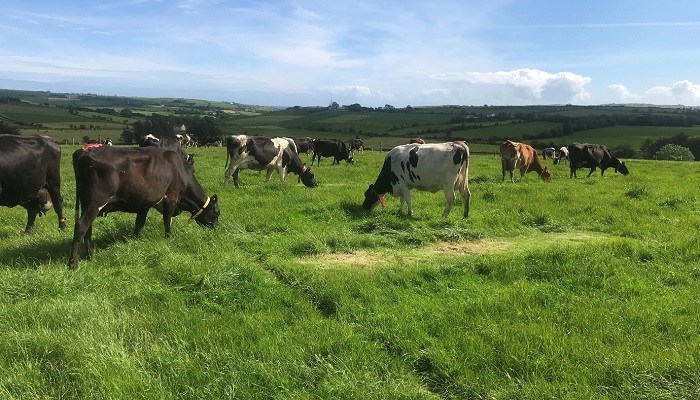24 February 2022
Incorporating white clover and protected urea into intensive grazing systems

The Clonakilty Agricultural College experiment from 2019-2021 investigated how reducing N fertiliser application levels on grass-only and grass-clover swards effected grass and milk production. Brian McCarthy, Research Officer and Áine Murray, Walsh Scholar, Teagasc Moorepark have more details
Photo above: Grazing plots at the Clonakilty Agricultural College protected N experiment
The Clonakilty Agricultural College experiment from 2019-2021 entitled “The effect of sward type (grass-only vs. grass-clover) and nitrogen (N) fertiliser level (150 vs. 250 kg N/ha) on the productivity of spring milk production systems” investigated how reducing N fertiliser application levels on grass-only and grass-clover swards effected grass and milk production.
Perennial ryegrass-white clover swards continue to show benefits in terms of milk and milk solids production. Over the three years, grass-only swards produced, on average, 5,549 kg milk and 468 kg milk solids (kg fat + protein) per cow/year, in comparison with the grass-clover swards that produced 5,859 kg milk and 499 kg milk solids per cow/year. This milk response was evident even at lower sward white clover contents (17%) than previous experiments compared to grass-only swards. Interestingly, N fertiliser rate did not have a significant effect on milk production or composition over the three years. In terms of grass production, sward white clover content was not high enough on the grass-clover-150 treatment to fully offset the 100 kg reduction in N compared to the grass-only-250 treatment (14.6 vs. 15.2 t DM/ha). Grass production, however, was higher for the grass-clover-150 treatment compared to the grass-only-150 treatment (13.8 t DM/ha). The results from this experiment show that white clover will continue to play an important role in facilitating reductions in N use and improving nitrogen use efficiency on dairy farms.
Along with this system experiment a grazing plot investigation was carried out from 2019-2021 comparing the efficacy of CAN, Urea and NBPT-Urea at both 150 kg N/ha and 250 kg N/ha at four site locations, Clonakilty, Moorepark, Athenry and Ballyhaise. Athenry and Ballyhaise were added in 2020. There was no evidence of difference in efficacy between the CAN and NBPT-Urea, as both supported similar herbage production and pre-grazing yields. There was slightly higher herbage production for CAN and NBPT-Urea than ordinary urea.
Authors: Brian McCarthy, Research Officer and Áine Murray, Walsh Scholar, Teagasc Animal and Grassland Research and Innovation Centre, Moorepark, Fermoy, Cork.
In this video clip, ACP Agronomist Bridget Lynch & Moorepark AGRIP Researcher Brian McCarthy give an update on research to reduce N fertiliser use with white clover.
Further information
The Agricultural Catchments Programme (ACP) is running a week of social media releases showcasing some of its activities from Monday 21 February to Friday 25 February. The week’s theme is “Working Together for Water Quality”.
